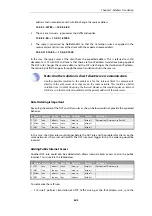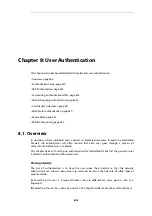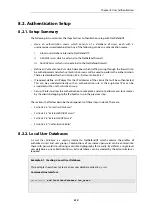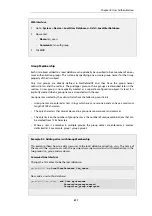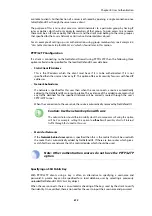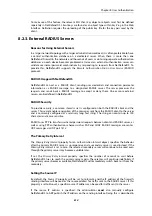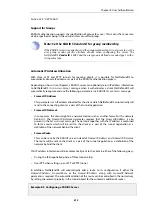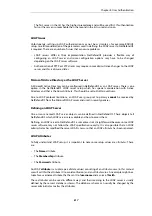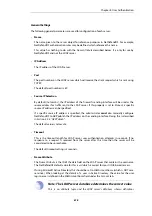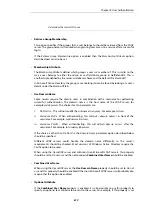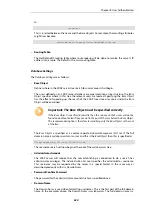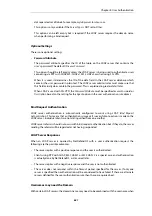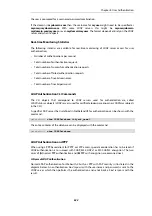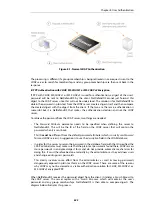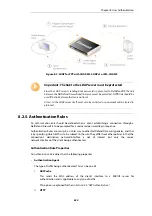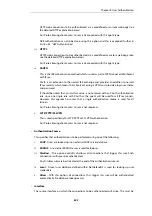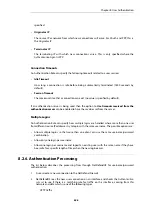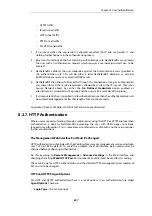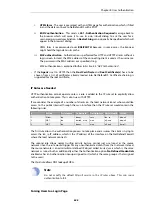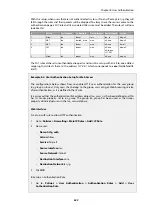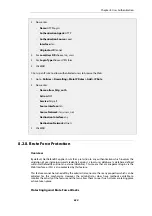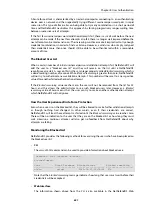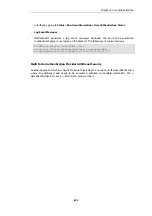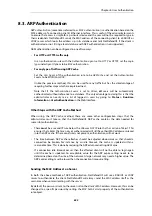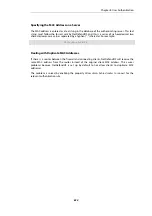
determines the correct ID to use.
•
Retrieve Group Membership
This option specifies if the groups that a user belongs to should be retrieved from the LDAP
server. The group name is often used when granting user access to a service after a successful
login.
If the
Retrieve Group Membership
option is enabled then the
Membership Attribute
option,
described next can also be set.
•
Membership Attribute
The
Membership Attribute
defines which groups a user is a member of. This is similar to the
way a user belongs to either the
admin
or
audit
database group in NetDefendOS. This is
another tuple defined by the server's database schema and the default ID is
MemberOf
.
In Microsoft Active Directory, the groups a user belongs to can be found by looking at a user's
details under the
MemberOf
tab.
•
Use Domain Name
Some servers require the
domain name
in combination with a username for performing
successful authentication. The domain name is the host name of the LDAP server, for
example
myldapserver
. The choices for this parameter are:
i.
Do Not Use
- This will not modify the username in any way. For example,
testuser
.
ii.
Username Prefix
- When authenticating, this will put
<domain name>\
in front of the
username. For example,
myldapserver/testuser
.
iii.
Username Postfix
- When authenticating, this will add
@<domain name>
after the
username. For example,
testuser@myldapserver
.
If the choice is other than
Do Not Use
, the
Domain Name
parameter option described below
should be specified.
Different LDAP servers could handle the domain name differently so the server's
requirements should be checked. Most versions of Windows Active Directory require the
Postfix
option to be used.
When using the
OpenLDAP
server and with most non-Microsoft LDAP servers, this property
should be set to
Do not use
and the next property Combined User Name should be enabled.
•
Combined User Name
When using the
OpenLDAP
server, the Use Domain Name property should be set to
Do not
use
and this property should be enabled. Other non-Microsoft LDAP servers will probably also
require that this option be enabled.
•
Optional Attribute
If the Combined User Name property is enabled, it is also possible to use this property to
specify an optional text attribute to be sent to the server. For example, if this property is set
Chapter 8: User Authentication
619
Summary of Contents for NetDefendOS
Page 30: ...Figure 1 3 Packet Flow Schematic Part III Chapter 1 NetDefendOS Overview 30 ...
Page 32: ...Chapter 1 NetDefendOS Overview 32 ...
Page 144: ...Chapter 2 Management and Maintenance 144 ...
Page 284: ...Chapter 3 Fundamentals 284 ...
Page 392: ...Chapter 4 Routing 392 ...
Page 419: ... Host 2001 DB8 1 MAC 00 90 12 13 14 15 5 Click OK Chapter 5 DHCP Services 419 ...
Page 420: ...Chapter 5 DHCP Services 420 ...
Page 573: ...Chapter 6 Security Mechanisms 573 ...
Page 607: ...Chapter 7 Address Translation 607 ...
Page 666: ...Chapter 8 User Authentication 666 ...
Page 775: ...Chapter 9 VPN 775 ...
Page 819: ...Chapter 10 Traffic Management 819 ...
Page 842: ...Chapter 11 High Availability 842 ...
Page 866: ...Default Enabled Chapter 13 Advanced Settings 866 ...
Page 879: ...Chapter 13 Advanced Settings 879 ...

